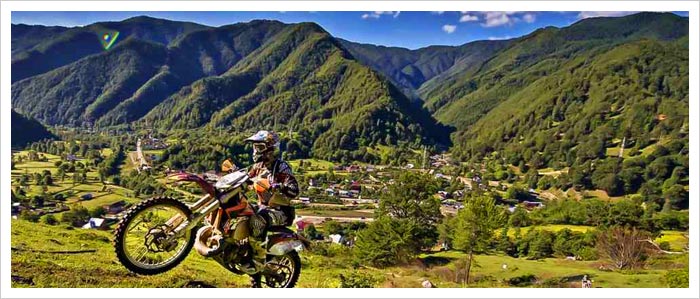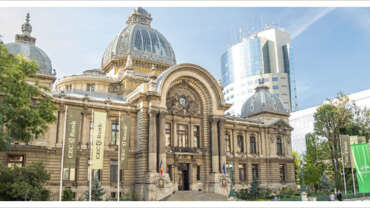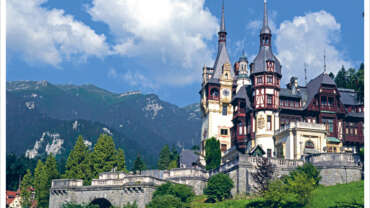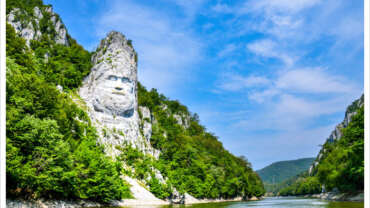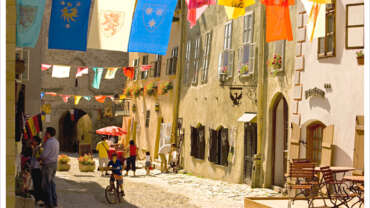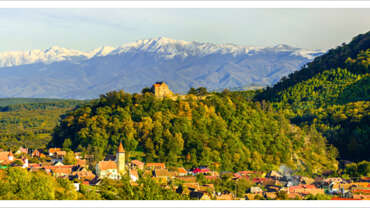Experiences in Romania
Romania’s Festivals and Events
Throughout the year, Romanians celebrate their ancient heritage, changing seasons, religious holidays and life-cycle events, such as birth, marriage and death, with festivals that have remained unchanged for centuries.
Some of Europe’s most traditional folkways are meticulously preserved here, with young celebrants wearing the same costumes and dancing the same steps to tunes played on instruments traditional to their forefathers since time immemorial. Festivals provide wonderful opportunities for visitors to experience the amalgam of the people who make up this country whose Latin roots dating from the Roman Empire make it unique in East-Central Europe.
Romanian Food and Wine
“The central characteristic of the Romanian cuisine is its great variety. It is a cuisine influenced by repeated waves of different cultures: the ancient Greeks, with whom Romanians traded; the Romans, who gave the country its name; the Saxons, who settled in southern Transylvania; the Turks, who for centuries dominated Romania; as well as Slavic and Magyar neighbors.
Romania Genealogy Searches
Among the millions of people that emigrated form Central and Eastern Europe to the United States of America and Canada at the end of the 19th Century and the beginning of the 20th were hundreds of thousand of Romanians nationals of different ethnic and religious backgrounds: Romanian, German, Jewish, Armenian, Serbian.
A new wave of emigration began in the late 1940s when communism became the political system of Eastern Europe. Civil records such as birth, marriage and death certificates, as well as other documents, are carefully preserved by the National Archives of Romania and are readily available to researchers.
Documents issued on or before 1890 can be found in the County Archives (Directia Judeteana a Arhivelor Nationale) while Documents issued after 1890 can be found at the Civilian Records Section of City Halls (Oficiul de Stare Civila al Primariei).
When searching for records it is helpful to know the name of the town or village in which the document was issued or the event (birth, marriage, death) occurred, as well as the approximate date/year. The County Archives assist those interested in genealogy searches by providing a wide range of services, from making photocopies of desired records to conducting research on a specific topic.
Jewish Heritage in Romania
Romania is a country rich in Jewish heritage. The first Jews arrived as part of the Roman legions (Legion Judaica) that invaded Dacia in 101 A.D. During the Middle Ages, Jewish immigrants began settling in Walachia and Moldova, with ever-increasing numbers arriving after Spain’s expulsion of the Jews in 1492. By the early 16th century, their number again increased by immigrants fleeing from Cossack uprisings in Poland and the Ukraine.
During the 15th and 16th centuries, Polish Jewish merchants set up storehouses, trading posts, and eventually, permanent settlements. During the region’s domination by the Turks, the Romanian Jewish Community evolved into a prosperous middle class.
Today, there are poignant reminders of Romania’s Jewish heritage and roots. The country is unique in Eastern and Central Europe for its scores of well-maintained synagogues (nearly 100, of which half are still used for worship) and more than 800 cemeteries scattered throughout Romania.
In Bucharest and elsewhere, there are Sunday-morning programs on Jewish subjects, Talmud Torah classes for youth and television programs and centers for historical studies. The community supports a publishing house, HaSefer, and puts out a bimonthly newspaper, Revista Realitatea Evreiasca.
Meetings and Incentive Travel in Romania
Long famous for its medieval towns, Painted Monasteries, Danube Delta, and the spa resorts of the Carpathian Mountains and Black Sea, Romania is now taking its place as a major European meeting destination.
As one of the European Union’s youngest members, Romania offers a warm welcome to conventioneers from all over the world, with an infrastructure to match the warmth. The Universal Postal Union Congress (2004), the Francophonie Summit (2006) and the 2008 NATO Summit are the most prominent of the many major, international events successfully hosted by Romania over the past few years.
For decades, the major meeting destinations in the country were easily identified: Bucharest and Brasov. But today, many other cities—such as Sibiu, Cluj, Iasi, Constanta, Timisoara—have developed into meeting hot spots. Poised on the brink of change, Romania is one of the last countries in Europe to maintain ancient traditions of village life that are still as colorful, festive and vibrant as they have been for centuries.
There is always another mystery to uncover, another cultural treasure to be discovered: Romantic castles and medieval towns filled with treasures of art and architecture, rare wildlife refuges and vast unspoiled land awaiting exploration, vineyards where distinctive wines awaken the jaded palate.
We are inviting you to discover, in the following pages, just a few of the many meeting facilities and incentive programs Romania offers today. And, as always, we look forward to welcoming you, and to your meeting with and in Romania!
Saxon Heritage in Romania
Beginning in the late 1800s and lasting until the mid 1900s Romania’s culture and arts acknowledged great French influences. Bucharest, the capital of Romania was known in the 1930s as “The Little Paris” or “The Paris of the East” and French was the second language in Romania.
However, Bucharest owes to its German-born king, Carol I, much of the systematization and modernization that occurred during late 1800s early 1900s.
Romania’s significant German (Saxon) heritage is obvious in Southern Transylvania, home to hundreds of well-preserved Saxon towns and villages. Saxons came to Transylvania during the mid 1100s from the Rhine and Moselle Rivers regions. Highly respected for their skill and talent the Saxons succeeded in gaining administrative autonomy, almost unmatched in the entire feudal Europe of absolute monarchies. The result of almost nine centuries of existence of the Saxon (German) community in Southern Transylvania is a cultural and architectural heritage, unique in Europe. Transylvania is home to hundreds of towns and fortified churches built between the 13th and 15th centuries by Saxons.
Romanian Traditions and Folklore
The countryside is the heart and soul of Romania, where peasant culture remains a strong force and medieval life prevails, as it does nowhere else in Europe. A young American couple, researching ancient traditional villages in Europe for post-graduate studies, recently moved in with a host family in Northern Romania in order to document a culture unique in the world.
People are happy to meet foreign visitors, often inviting them into their homes for a meal and conversation. For a true introduction toRomania’s traditional villages, consider a home stay. Rates range from $8 to $25 per person including two meals. Rooms are clean and comfortable but some do not have private baths. Most hosts do not speak English.
Romania’s Scenic Drives
Scenic Drives – amazing journeys to unique destinations!
Whether it’s racing through the Carpathian Mountains or ambling along the Danube River, Romania offers countless picturesque views from the road.
Romania’s national roads network cannot rival the US Interstate Highway system but the Transfagarasan and TransAlpina, two unique thoroughfares over the southern Carpathian Mountains are part of any list of the world’s most amazing roads.
Other scenic drives in Romania include: the TransBucegi, Pasul Rucar – Bran, Pasul Turnu Rosu (Valea Oltului), Pasul Buzaului, Defileul Jiului, Valea Cernei, Valea Bistritei Aurii, Pasul Tihuta, Cheile Bicazului and TransSemenic.



